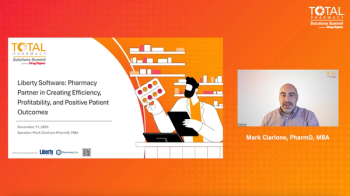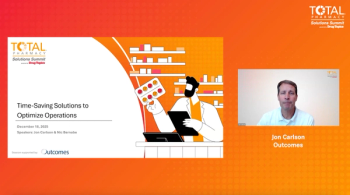
Immunotherapy-Induced Pneumonitis Common in Patients With NSCLC
Knowledge gaps exist around the timing of pneumonitis onset in patients treated with checkpoint inhibitors.
Development of immunotherapy-induced pneumonitis is common after just 1 treatment cycle, according to research results presented at the 2023 ASCO Annual Meeting.1
Incidence of pneumonitis—a widely recognized adverse effect of immunotherapy—has increased incidence in patients with non-small cell lung cancer (NSCLC) compared with other solid organ malignancies. According to researchers, a literature review showed a pneumonitis incidence rate of 5% in patients receiving PD-1/PD-L-1 inhibitors.
Because the ability to predict pneumonitis timing, which patients will develop it, and “to what extent pneumonitis will present” has been a significant challenge, researchers sought to evaluate the timing of onset of immunotherapy-induced pneumonitis in patients treated with checkpoint inhibitors to treat primary lung cancer, to evaluate the patterns that may aid in diagnosis and treatment.
Investigators conducted a retrospective study at a single institution, reviewing patients with primary lung cancer who received checkpoint inhibitor therapy between 2018 and 2023, with a focus on the dates of therapy initiation and pneumonitis onset. For this study, immunotherapy-induced pneumonitis was defined as “the development of abnormal findings with or without respiratory symptoms following initiation of immunotherapy.”
In total, 117 patients met inclusion criteria, 8.5% of whom met criteria for immunotherapy-induced pneumonitis (n=10). All patients had NSCLC, most commonly squamous cell carcinoma ranging from stage III to stage IV. Durvalumab was the most common immunotherapy, used in 6 of 10 patients. Average time between first immunotherapy dose and immunotherapy-induced pneumonitis was 66.5 days (range, 1-163 days), with an average number of 3.7 cycles received before diagnosis; most cases occurred after less than 5 cycles (7of 10 patients). Pneumonitis grade ranged from 1 to 5.
“The timing of immunotherapy-induced pneumonitis, while variable, occurred after recieivng less than 5cycles…with most occurring after just 1 cycle,” the researchers concluded. “While our study is limited by the number of patients, the incidence of pneumonitis…was close to that of the national average and may also be reflective of the timing of immunotherapy-induced pneumonitis.”
Additional studies with larger patient cohorts are needed.
Reference
Winter M, Gilani MA, Anipindi M, Venigalla T, Doreswamy S. Timing of immunotherapy-induced pneumonitis in patients with primary lung malignancy. J Clin Oncol. 2023(suppl 16; abstr 2647). doi:10.1200/JCO.2023.41.16_suppl.2647
Newsletter
Pharmacy practice is always changing. Stay ahead of the curve with the Drug Topics newsletter and get the latest drug information, industry trends, and patient care tips.











































































































































































































